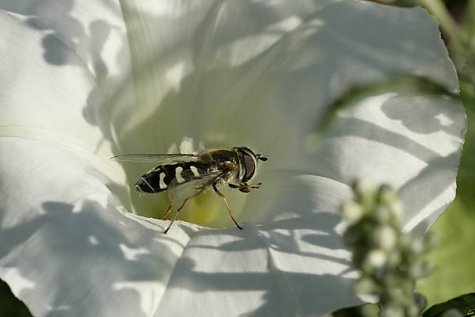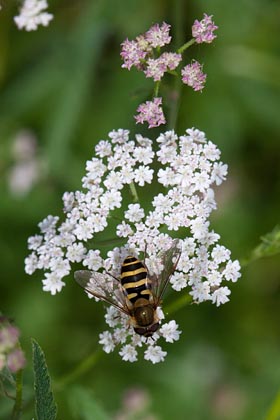Hoverflies not stingy
Photos: Arne Ader
Translation: Liis
Hoverfly on bindweed
Hoverfly family Perekond sirelased Syrphidae
In August we meet these wasp-like insects quite often; mistakenly they are often believed to have a venomous sting – actually they do not have a sting at all, thus there is no cause to fear being stung. The great wasp-like protective colouring ensures that birds and animals are not particularly keen on touching them.
Hoverflies are two-winged insects capable of performing hovering flight and otherwise too master fliers. The hoverfly imagos are externally quite different but with similar ways of life – they fly in daytime and feed on nectar.
The larvae of the drone fly /Eristalis tenax/ live in the bottom mud of heavily polluted waters. Before pupation the larva crawls out of the water, the pupa will develop in soil. The larvae of the hoverfly Temnostoma inhabit dead wood.
The larvae of the Volucella hoverflies live in bumblebee nests where they feed on dead bumblebee larvae and nest debris.
The major part of hoverfly larvae are predators feeding on greenflies (aphids). The larva of the species Syrphus balteatus for instance sucks up to a couple of thousand greenflies dry in the course of its development. So highly useful insects in all ways.
Hoverflies belong to the Brachycera suborder of the flies (Diptera) order and there are about 4500 species of them in the world.
Hoverfly on Japanese hedge parsley










